Financial Markets Outlook 2010, Wealth Protection and Investment Insurance in Unstable Times
Stock-Markets / Financial Markets 2010 Jan 02, 2010 - 03:04 PM GMTBy: Elite_E_Services
 We are not providing the solution, we are asking the question, how to protect wealth in uncertain times? The financial crisis has changed the lives of millions. One of them, Glen Pizzolorusso, used to be a subprime mortgage broker making more than $100,000 a month:
We are not providing the solution, we are asking the question, how to protect wealth in uncertain times? The financial crisis has changed the lives of millions. One of them, Glen Pizzolorusso, used to be a subprime mortgage broker making more than $100,000 a month:
For Pizzolorusso, the story started when he was just 14 and working in his father's mortgage firm. Making a habit of 60-hour weeks, he found his way up from his father's company to a position as head of a subprime mortgage sales team. He was bringing home more than $100,000 a month, choosing each day which of his five cars to drive, shuttling between two luxury homes, partying in expensive New York City nightclubs.
Pizzolorusso, still in his 20s, was living the glamorous life. "We rolled up to Marquee at midnight with a line 500 people deep out front," he said last year in the special This American Life episode called "The Giant Pool of Money." "Walk right up to the door: 'Give me my table.' Sitting next to Tara Reid and a couple of her friends. Christina Aguilera was doing some 'I'm Christina Aguilera and I'm gonna get up and sing' kind of thing. Who else was there? Cuba Gooding and that kid from Filthy Rich: Cattle Drive. What was that kid's name? Fabian Barabia? We ordered three, four bottles of Cristal at $1,000 per bottle. They bring it out — you know they're walking through the crowd, they're holding the bottles over their heads. There's firecrackers, sparklers. You know, the little cocktail waitresses. You know, so you order three or four bottles of those and they're walking through the crowd and everyone's like, 'Whoa, who's the cool guys?' We were the cool guys. They gave me the black card with my name on it. There's probably 10 in existence. You know? And that meant that I spent way too much money there."
The good times lasted until the subprime mortgage bubble burst. Pizzolorusso entered his own personal financial crisis. He lost everything. His company is out of business. He lost the Porsche and the other cars. He lost his home to foreclosure. He can't afford to rent a place, so he's staying at a house his dad owns, the one where he grew up. "I have been humbled," he says today. "I mean, I've been forced to be humbled. I have a different outlook of what is important. I used to think that it mattered; it doesn't. None of the monetary stuff that we are preconditioned to think is important matters."Instead of partying, Pizzolorusso spends most of his time now with his wife and three kids. He's in school and loves it. He never liked school before. He's reading a lot of books about politics and history. He never liked reading before. He says it's like a new Glen has arrived.
How do investors adjust their thinking, adjust their portfolios, and their objectives? First let’s examine the problems presented by the crisis.
Quantitative Easing
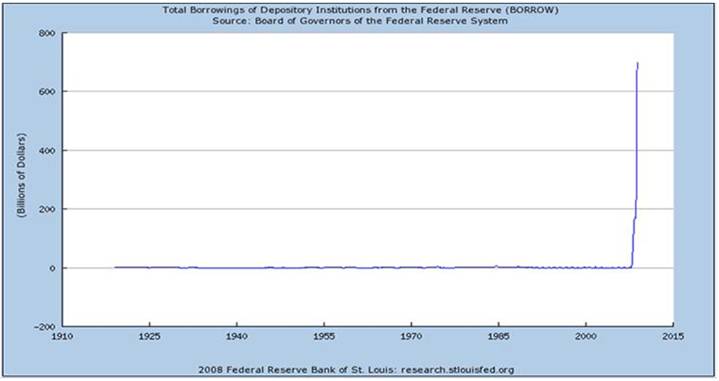
What is quantitative easing?
The term quantitative easing describes an extreme form of monetary policy used to stimulate an economy where interest rates are either at, or close to, zero. Normally, a central bank stimulates the economy indirectly by lowering interest rates but when it cannot lower them any further it can attempt to seed the financial system with new money through quantitative easing.
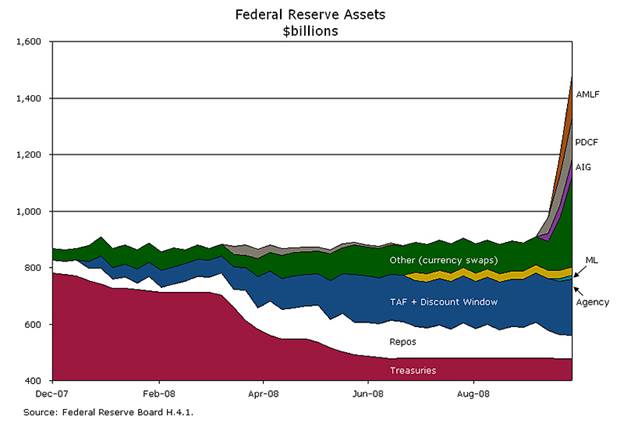
Quantitative easing is intellectual speak for ‘printing money’. In today’s world, short people aren’t short they are ‘vertically challenged,’ but ‘Quantitative Easing’ is not a politically correct term, it is a well designed sound byte. It is a clever sounding way to say ‘printing money’ because if the front pages of the news were littered with phrases like “Fed Prints Trillions of Dollars” some who remember Yugoslavia and the Weimer Republic and Zimbabwe may realize what’s going on. Zimbabwe’s recent hyperinflation is a reminder that hyperinflation is a real phenomenon, not something just for history books.
Simply, quantitative easing will have a net effect of a decreased value of money, possibly a great decrease, such as was seen in Zimbabwe and Yugoslavia. Add Forex into the equation, and it creates a complex equation where the value of all currencies decline together.
Central Banks have been decreasing their rates to zero, and since they cannot lower rates below zero, they can only create money and hopefully exchange it for foreign currency on the Forex Market, driving down the value of their own currency.
You’re probably thinking ‘that can’t happen in America’. Actually, America’s financial history is filled with panics, depressions, crisis, and collapsing currencies; with relatively few periods of sustained stability. During the late 19th century, called the ‘free banking era’, there was no restriction on the issuance of private currencies and therefore thousands of banks, companies, wealthy individuals, states, cities, towns, municipalities, and churches issued their own currencies:
In the United States, the Free Banking Era lasted between 1837 and 1866, when almost anyone could issue paper money. States, municipalities, private banks, railroad and construction companies, stores, restaurants, churches and individuals printed an estimated 8,000 different monies by 1860. If an issuer went bankrupt, closed, left town, or otherwise went out of business the note would be worthless. Such organizations earned the nickname of "wildcat banks" for a reputation of unreliability; they were often situated in remote, unpopulated locales said to be inhabited more by wildcats than by people. Yet according to Lawrence H. White's article in The Freeman "it turns out that 'wildcat' banking is largely a myth. Although stories about crooked banking practices are entertaining—and for that reason have been repeated endlessly by textbooks—modern economic historians have found that there were in fact very few banks that fit any reasonable definition of wildcat bank." The National Bank Act of 1863 ended the "wildcat bank" period.
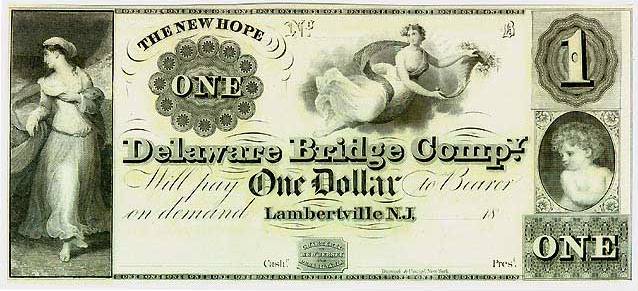
Another forgotten crisis was the Panic of 1907, had it not been for mogul JP Morgan, may have led to a complete meltdown:
The Panic of 1907, also known as the 1907 Bankers' Panic, was a financial crisis that occurred in the United States when the New York Stock Exchange fell close to 50% from its peak the previous year. Panic occurred, as this was during a time of economic recession, and there were numerous runs on banks and trust companies. The 1907 panic eventually spread throughout the nation when many state and local banks and businesses entered into bankruptcy. Primary causes of the run include a retraction of market liquidity by a number of New York City banks and a loss of confidence among depositors.The crisis was triggered by the failed attempt in October 1907 to corner the market on stock of the United Copper Company.
When this bid failed, banks that had lent money to the cornering scheme suffered runs that later spread to affiliated banks and trusts, leading a week later to the downfall of the Knickerbocker Trust Company—New York City's third-largest trust. The collapse of the Knickerbocker spread fear throughout the city's trusts as regional banks withdrew reserves from New York City banks. Panic extended across the nation as vast numbers of people withdrew deposits from their regional banks.The panic may have deepened if not for the intervention of financier J. P. Morgan, who pledged large sums of his own money, and convinced other New York bankers to do the same, to shore up the banking system. At the time, the United States did not have a central bank to inject liquidity back into the market. By November the financial contagion had largely ended, yet a further crisis emerged when a large brokerage firm borrowed heavily using the stock of Tennessee Coal, Iron and Railroad Company (TC&I) as collateral. Collapse of TC&I's stock price was averted by an emergency takeover by Morgan's U.S. Steel Corporation—a move approved by anti-monopolist president Theodore Roosevelt. The following year, Senator Nelson W. Aldrich established and chaired a commission to investigate the crisis and propose future solutions, leading to the creation of the Federal Reserve System.
Another myth: Times have changed; there are no more ‘wildcat currencies’. Yet many use them every year, known as Disney Dollars.
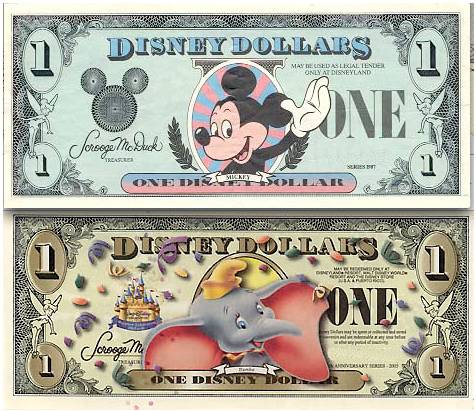
Disney dollars are a form of corporate scrip or tokens sold by Walt Disney and accepted at the company's theme parks, the Disney cruise ships, The Disney Store and at certain parts of Castaway Cay, the Disney Cruise Line's private island. Disney Dollars are somewhat similar in size, shape, and design to the currency of the United States. Most of them bear the image of Mickey Mouse, Minnie Mouse, Donald Duck, Goofy, Pluto or a drawing of one of the landmarks of Disneyland or Walt Disney World Resort. Two small monochrome reproductions of Tinker Bell float to the sides. There is sometimes the signature of the Treasurer, Scrooge McDuck. The concept behind the Disney dollar was mocked on The Simpsons episode "Itchy & Scratchy Land". At the episode's titular park, Homer converts $1,100 to "Itchy & Scratchy Money", advertised by the ticket-taker as similar to regular money, but "fun". When the family heads to the merchants within the park, they discover that none of them take Itchy & Scratchy Money.
The similarities between Disney dollars and US dollars are huge:
- Both can be converted to Euros
- Both have anti-counterfeiting features such as microprinting
- Both bills have serial numbers
- Both are issued by a private corporation backed by nothing (in contrast to a Gold backed currency)
- Both can be used in exchange for food, lodging, products, and other services
- Both act as a form of savings, to be used at a later future date
One thing about Disney Dollars, users can rest assured that as long as Disney is in business, you can exchange your Disney Dollars for ‘fun’ at the parks.
The fed is a private corporation offering no product other than money, therefore it could be said that Disney Dollars have more intrinsic value (except that they are pegged 1:1 with the US Dollar) because unless Disney goes out of business (possible but not likely) there will always be a market for their use. The US Dollar on the other hand, is valuable only because users decide to use it, they CHOOSE to use it as an accounting currency for their trade. But this is changing rapidly, as foreigners choose to trade in Yen, Yuan’s, Gold, Euros, and other currencies, and Americans are increasingly relying on barter.
In the most profound financial change in recent Middle East history, Gulf Arabs are planning – along with China, Russia, Japan and France – to end dollar dealings for oil, moving instead to a basket of currencies including the Japanese yen and Chinese yuan, the euro, gold and a new, unified currency planned for nations in the Gulf Co-operation Council, including Saudi Arabia, Abu Dhabi, Kuwait and Qatar. Secret meetings have already been held by finance ministers and central bank governors in Russia, China, Japan and Brazil to work on the scheme, which will mean that oil will no longer be priced in dollars. The plans, confirmed to The Independent by both Gulf Arab and Chinese banking sources in Hong Kong, may help to explain the sudden rise in gold prices, but it also augurs an extraordinary transition from dollar markets within nine years.
If you learn to drive on a road with no curves, you may not think a car even needs a steering wheel. Many of us have been born and were living in such a world. For many, the realization that a road can have curves is difficult to accept, but as the car heads toward the first curve many drivers will become quick learners.
Stock Market
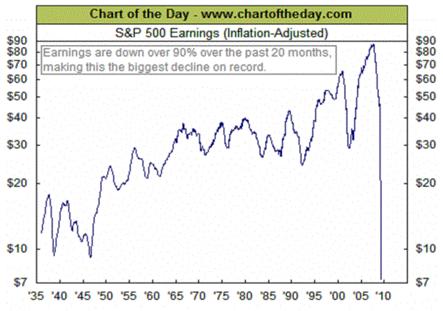 Stock Market is supported by ‘wall of money’ – the real value of the S&P is reflected in the inflation adjusted earnings chart:
Stock Market is supported by ‘wall of money’ – the real value of the S&P is reflected in the inflation adjusted earnings chart:
There are many arguments being made about stock investing, such as:
- Low yielding bonds and money market accounts
- Few alternatives
- Currency moves may impact the stock market positively
- TARP and other programs will prop the stock market
While these are valid arguments, they do not take into consideration many risks of stock investing. For example, stocks are highly correlated with the economy. A downturn in the economy is sure to affect stock prices. Also in an economic crisis, companies are subject to management risk. That is the risk that bad mangers will create losses or in the worst case, fraud. This doesn’t mean there aren’t opportunities in the stock market – because any crisis produces opportunities. But how is the average investor privy to the right information to make those decisions, which can be complex in an environment that has not been experienced before.
What does a falling dollar mean for my portfolio?
A falling dollar can have 2 adverse consequences on any investor:
- Inflation, in the form that money becomes less value, in terms of purchasing power
- A declining dollar can lead to increased prices because the US is a net importer.
A falling dollar impacts everyone, at every level, who is using dollars and works in a dollar based economy. It could increase the cost of living, it could decrease the purchasing power dollar holders have for everyday items, real estate, energy, food, and other non-dollar manufactured products and commodities.
Having a USD based portfolio also means that while your portfolio may increase by 10%, if the value of the dollar goes down by 10%, the portfolio is net flat. This loss will not be realized on an account statement. However, if the USD base was switched to a EUR base and then switched back 1 year later, a 10% profit would be realized. The portfolio would have 10% more USD in the account than the previous year.
Currency trading is risky this is not to suggest investors manage their own currency risk. However they should be aware that it exists, and seek appropriate solutions. An automated system is one but many tools that can be used for defensive protection of any portfolio or alpha creation.
How algorithms can help you
A system that always wins with no risk is a fantasy. What does exist is a system that dynamically manages risk based on pre-defined parameters. An algorithm is a process, a series of steps. Imagine you could program an army of traders and analysts to monitor millions of calculations in the blink of an eye. This is possible and is being done by traders at an alarming rate. The news has been talking about ‘flash trading’ – which is a form of automated trading but it is only one part of a greater whole. George Soros and Warren Buffett have been rumored to use a ‘black box’ that spits out trade recommendations for decades. Algorithmic trading, or systems trading, is simply investing by following a system (not necessarily involving computers!). However, computers make any system much more powerful due to their ability to calculate large numbers on the fly and not make any mistake. That doesn’t mean computer models are perfect, they are far from it. But removing the human error, and removing mistakes, fatigue, and other issues, what you have left is the best it can be.
Market neutral
How does the system know what the direction of the Dollar will be? Quick answer: It doesn’t know and it doesn’t care. Forecasting the direction of currencies is nearly impossible, at least to say it’s difficult. A market neutral system runs in any type of market, hence the name ‘market neutral’. The system can profit if the market is going up or down. That doesn’t mean it’s infallible, this statement simply is contrasting the system with many traditional money managers, such as many Mutual Funds, that are limited to only buy stocks for example, so if the stock market is going down they will have trouble winning.
Forex vs. traditional investing
In a bad economy, where do profits exist? How does one identify the right opportunity?
Most traditional investments, i.e. stocks, bonds, and commodities, are connected to the real economy. In other words, they depend on sales by consumers and other businesses. Even the price of oil has a demand function, if businesses are closing and purchasing less oil, the price will fall. Companies that sell a product, even a necessary product, depend on consumers. 75% of US GDP depends on the US Consumer, who has less money and available credit than ever before.
Even if you have the best product in the world, if customers don’t have money to buy, it’s difficult to sell.
A market neutral Forex system doesn’t have any product, it trades money for money. Europeans have a demand for Dollars and Yen just as Americans have demand for Euros and Pounds. Whether the dollar goes up or down, as long as the US economy exists, someone somewhere will have a demand to trade Dollars. This means there are constant opportunities for buying and selling – the key is to trade actively and not take a major position on market direction, and to cut the losses and ride the gains.
Industry Example: Car Dealerships
Many dealerships deal only in dollars. They fight for thin margins so although they may not have treasury desks and hedging operations, they understand the value of saving their hard earned dollars. Dealers sell a tangible product for an artificial one: dollars. They exchange those dollars for things they need, in which lies the risk. Dealers who hold dollars in banks are exposed to inflation and currency risk. Also, they are exposed greatly to the economic impact of a falling dollar, as they rely on buyers flush with cash for down payments. Their solution is simple: hedge the falling dollar with options as a form of insurance. Dealers take out insurance on their cars, why not for their cash?
They make a profit on Japanese cars, why not on the Japanese Yen, that has seen approximately a 20% rise since November of last year. If the average operating profit margin of a dealership is 5% - 10%, they should be pleased with a 20% profit, using no leverage.
For instance, if you deal with BMW and Toyota, you actually deal with the Yen and the Euro even if it’s not directly reflected on your balance sheet. A hedging program could be implemented using the natural position of the balance sheet (buying from Toyota give you a naturally short Yen position because you need to first buy Yen before buying Toyota). This isn’t always obvious as Toyota may have their own hedging operations and sell their cars in USD, however Toyota is a Japanese company and mostly operates in Yen, regardless of what US dealers may see. And bottom line, if you can sell cars for a lower price due to a hedging program, it will be easy to crush the competition.
The value of their inventory isn’t declining in value in real time, and even if a car was valued at zero, it would still have the intrinsic use-value of transportation, shipping, or other uses. The automotive industry also depends heavily on foreign partnerships based in Euros and Yen. Dealers cannot rely on manufacturers to hedge against forex risk, as large manufacturers have proven to be forex losers (such as Airbus, who lost over one billion euros due to a falling dollar.)
List of major international corporations that have posted negative quarterly earnings due to forex which would otherwise have been positive (Forex losses greater than business profits):
This is by no means an exhaustive list of all companies that meet the criteria, but just an example which proves that just because a company is large, international, well funded, and operates in multiple currencies; doesn’t mean they have a Forex hedging program or protection against a falling dollar.
Conversely, companies with successful Treasury Desks such as Intel, have made more money in Forex hedging than by selling their primary product such as processors!
Dollar alternatives
The UN has called for a new reserve currency. Some claim this is not politically feasible, but one thing is certain: in the future, we can expect more uncertainty. A move away from a US Dollar global reserve regime will provide many trading opportunities in the foreign exchange market, as well as potentially devaluing the assets based in falling currencies.
Regardless of what happens with the Dollar and other currencies, the uncertain future will have a strong need for such automated trading systems which can perform in uncertain, volatile markets.
An automated system may not be the total solution to invest in uncertain times, but in a complex market, it should be included in any portfolio as a powerful tool to trade and invest.
http://www.npr.org/templates/story/story.php?storyId=113169756
http://en.wikipedia.org/wiki/Quantitative_easing
http://en.wikipedia.org/wiki/Hyperinflation
http://en.wikipedia.org/wiki/Disney_dollar
http://mousepad.mouseplanet.com/archive/index.php/t-49692.html
http://eliteeservices.blogspot.com/2009/10/new-currency-announced-dollar.html
http://business.timesonline.co.uk/tol/business/industry_sectors/engineering/article3533582.ece
http://industry.bnet.com/energy/10001643/chevron-q2-squeezed-by-weak-dollar-us-refining-margins/
http://www.vivendi.com/ir/download/pdf/PR170603_Q1Earnings.pdf
http://eliteeservices.blogspot.com/2009/07/mcdonalds-loses-7-on-us-dollar-move.html
http://eliteeservices.blogspot.com/2009/10/seeking-alpha-is-world-conspiring.html
By Elite E-Services
http://eliteeservices.net/ Elite E Services FX Systems See more articles at www.eliteforexblog.com
Elite E Services is an electronic boutique brokerage specializing in currency trading, intelligence, and technology surrounding foreign exchange markets. EES offers FX trading systems for clients and investors, FX consulting, technology and tools for trading, system development, custom programming, and FX solutions for businesses.
DISCLAIMER: This article is for educational purposes only. It is not a solicitation to invest or a recommendation for investing. Foreign Exchange Trading is extremely risky and is for the sophisticated investor only. Trading foreign exchange on margin carries a high level of risk, and may not be suitable for all investors. The high degree of leverage can work against you as well as for you. Before deciding to invest in foreign exchange you should carefully consider your investment objectives, level of experience, and risk appetite. The possibility exists that you could sustain a loss of some or all of your initial investment and therefore you should only invest risk capital that you can afford to lose. You should be aware of all the risks associated with foreign exchange trading, and seek advice from an independent financial advisor.
© 2005-2022 http://www.MarketOracle.co.uk - The Market Oracle is a FREE Daily Financial Markets Analysis & Forecasting online publication.



